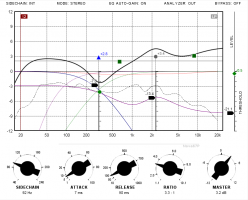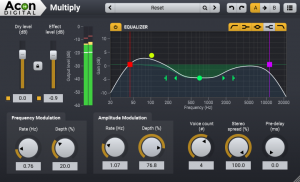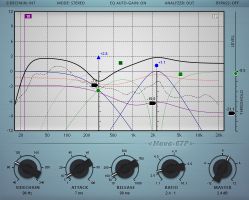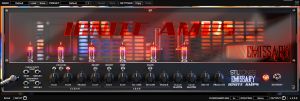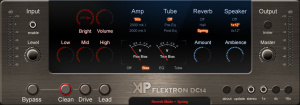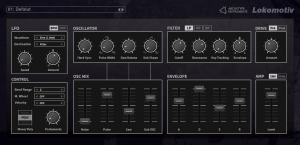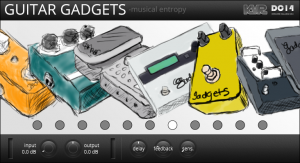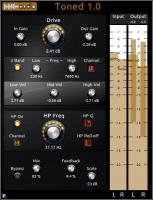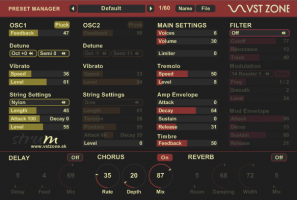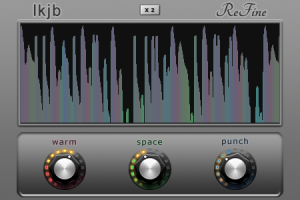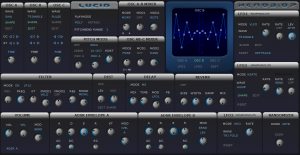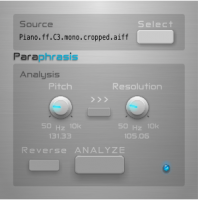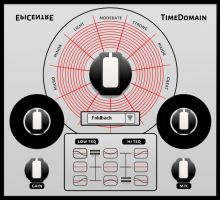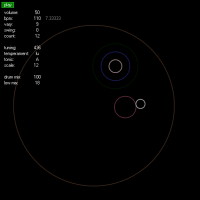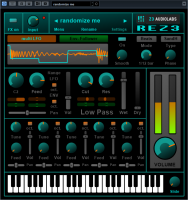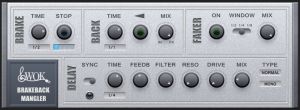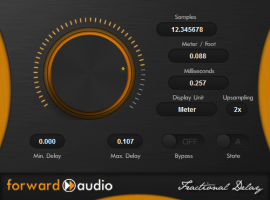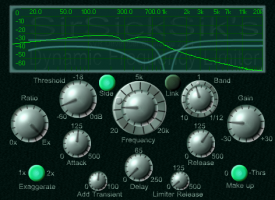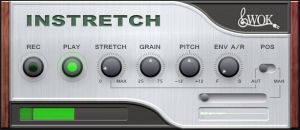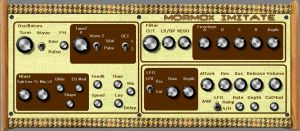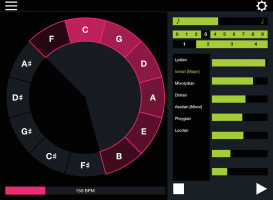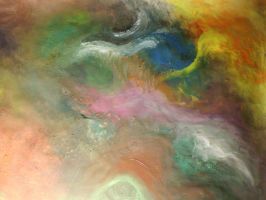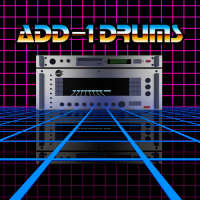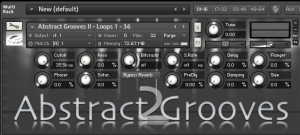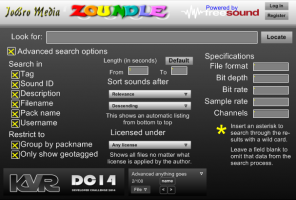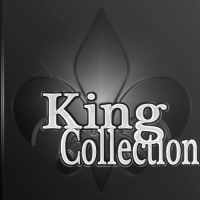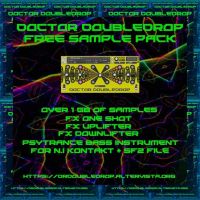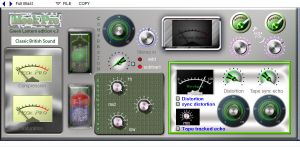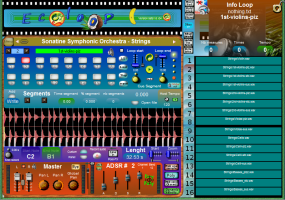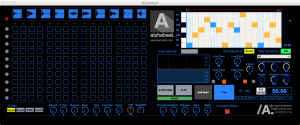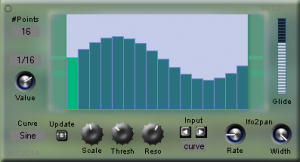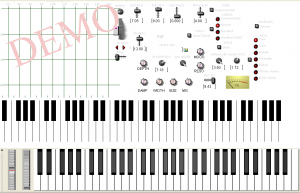
KVR Developer Challenge 2014
Welcome to the KVR Developer Challenge 2014, the fifth free-for-all audio plugin / audio application / soundware design event!
The "KVR Developer Challenge" is for anyone who develops Audio Plugins or Applications and Soundware. The challenge is to create and release a brand new free audio plugin, application or sound library / pack / set that will benefit the community at large. Creativity is key, it can be as simple or as complex as you want - KVR members will vote on the entries and pick the eventual winner using whatever criteria they choose to.
The voting stage has ended and we are very excited to announce that we have winners! Thanks to everyone who entered, donated and voted!
1st: Multiply by Acon Digital
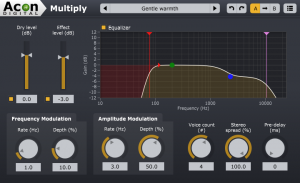 In first place is Acon Digital with their chorus effect plugin, Multiply, an Audio Unit, VST Plugin and AAX Plugin for 32- and 64-bit Windows and Mac OS X. Being both Mac & Win compatible Acon Digital win 60% of the KVRDC14 prize fund! Of course they also win the fantastic A3E prize giving them the opportunity to present their entry at the A3E show in Boston, September 23-24, 2014! Congratulations to them.
In first place is Acon Digital with their chorus effect plugin, Multiply, an Audio Unit, VST Plugin and AAX Plugin for 32- and 64-bit Windows and Mac OS X. Being both Mac & Win compatible Acon Digital win 60% of the KVRDC14 prize fund! Of course they also win the fantastic A3E prize giving them the opportunity to present their entry at the A3E show in Boston, September 23-24, 2014! Congratulations to them.
Multiply is a versatile chorus effect with a unique twist. Each simulated voice is processed with a phase randomizing filter so that unpleasant comb filter effects are avoided. The effect can be used to simulate the effect of several performers playing the same tones simultaneously, to widen the spatial image or to create special effects for sound design.
Multiply can simulate up to 6 additional voices and both the pitch and the loudness of the voices can be modulated. There is also an integrated equalizer consisting of low cut, low shelf, high shelf and high cut filters that can be applied to the effect signal. An integrated pre-delay section makes it possible to create modulated and diffuse echo effects.
2nd: Nova-67P by vladg/sound
The runner up is Nova-67P by vladg/sound, a parallel parametric equalizer plugin combined with a compressor. It's also available for 32- and 64-bit Windows and Mac OS X in Audio Units and VST plugin formats. vladg/sound wins 20% of the final prize fund.
Nova-67P is a parallel parametric equalizer plugin combined with a compressor. The compressor can optionally operate in frequency dependent and split-band modes. In this case the plugin operates as a parallel dynamic equalizer.
Features:
- 5 bands parallel equalizer with auto-gain.
- Optional high-pass and low-pass filters.
- Full-band frequency dependent and/or split-band compression.
- Side-chain filtering and pre-emphasis.
- Third-octave real-time spectrum analysis down to 15 Hz.
- External side-chain support.
- 64-bit internal processing.
- Ascetic UI style.
3rd: Emissary by Ignite Amps
 Rounding out the top three is another effect plugin: Emissary by Ignite Amps, a digital emulation of a custom dual channel guitar tube amplifier. Sadly there is no financial reward for third place this year, but Ignite Amps can revel in the glory of placing in the top 3 and scoring more than twice as many votes as the fourth placed entry.
Rounding out the top three is another effect plugin: Emissary by Ignite Amps, a digital emulation of a custom dual channel guitar tube amplifier. Sadly there is no financial reward for third place this year, but Ignite Amps can revel in the glory of placing in the top 3 and scoring more than twice as many votes as the fourth placed entry.
Emissary has been developed to accurately model its real hardware counterpart, built for Ryan Huthnance (The Seer / Gaped / Chrome Bison / Emissary Studios) by Ignite Amps, in 2014. It is a no compromise custom amp built for the kill. Featuring a very versatile clean channel that ranges from pristine cleans to slightly overdriven tones and a mean lead channel designed for serious bone-crushing distortions, it offers a very wide tonal palette for the modern metal musician.
Every single component on the signal path of the real analog circuit has been taken into account and modeled in the best possible way to match the original sound, keeping an eye on CPU performance and real-time playability at the same time.
The plugin GUI has been 3D modeled and rendered by Voger Design, in order to resemble the real amplifier as much as possible.
Soundware Winner: NanoMod 7: 8-bit synths by Rhythmic Robot
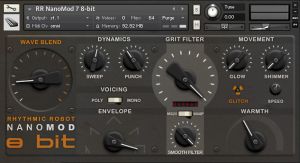 The top rated Soundware release, and so winning 10% of the prize fund, is NanoMod 7: 8-bit synths by Rhythmic Robot, a simple but versatile Kontakt synthesiser based on vintage 8-bit polysynths, featuring an "intelligent" interface that allows the user to adjust multiple parameters with single controls.
The top rated Soundware release, and so winning 10% of the prize fund, is NanoMod 7: 8-bit synths by Rhythmic Robot, a simple but versatile Kontakt synthesiser based on vintage 8-bit polysynths, featuring an "intelligent" interface that allows the user to adjust multiple parameters with single controls.
Wildcard Winner: Fifth Degree by Bernie Maier
Which brings us to the Wildcard (which wins the final 10% of the prize fund). This decision was simple - we have no qualms in awarding it to Fifth Degree by Bernie Maier, primarily because it's our first ever entry for iOS! Perhaps we'll get an Android entry next time?
Fifth Degree is a MIDI sequencer based on a simple concept: loop around the musical circle of fifths in key and tweak the performance parameters live. You can use it to create a mesmerising loop and change the way it plays or use it as a base while you improvise alongside it with another instrument. You can even use it as a convenient loop of notes while you try out different sound patches on your synthesiser.
It's all over now...
So what have we learned? Well, KVR members love an effect plugin! Including KVRDC14, the last three challenges have been won by effect plugins (If bootsie / Variety Of Sound had entered this year would he have made it three in a row? I bet the other entrants breathed a sigh of relief when the entries were published and he hadn't entered!).
Interestingly, while the total number of entries was down on last time, all three of this year's top placed entries are cross-platform, multi-format and 32- and 64-bit. This is a first for the KVRDC and, along with our first iOS entry, a very good thing for the future of the event. With the ever increasing usage of mobile audio applications I expect to see at least one Android app next time! Roll on KVRDC15...
Below you'll find the 37 entries for KVRDC14! 29 run on Windows, 9 on Mac OS X, 1 on Linux, 1 on iOS and 6 are Soundware for other products. Thank you and congratulations to all developers for getting your entries in. They are listed in the order they finished.
KVR Developer Challenge 2014 Entries
All
Entries
37
Plugin / App
29
Plugin / App
10
Plugin / App
1
Plugin / App
1
Soundware
6

by Acon Digital

by vladg/sound

by Ignite Amps

by AXP

by Archetype Instruments

by Musical Entropy

by madBee :: audio

by Virtual Analogy

by Rhythmic Robot

by Z3 Audiolabs

by WOK

by Solcito Música

by forward audio

by SirSickSik

by easytoolz

by Acrobatics

by Bernie Maier

by Samuel Bereczky (SamBySound)

by beatZ

by Particular-Sound

by JoBroMedia

by Ws Pro Audio

by Doctor Doubledrop

by Acidacide Media

by Midi Mobiles

by Max Brezhestovski

by Strainwave

by Wolf Sound
Rules, Information, Guidelines, etc.
Show/Hide RulesRules, Information, Guidelines, etc.
Any operating system, any plugin format, a stand-alone application, a sound library - anything that will assist in music making goes! You have four months to get it together - submissions will end on July 31st, 2014. They will all then be hosted for download on the KVR server and released "AT ONCE" for public appraisal and voting!
Although anything goes, you should consider how to appeal to the largest market - things such as open source or being multi-platform may garner a bigger audience, and consequently more votes. This is your call though. Whatever you are comfortable with!
The Basics:
- Anyone may enter.
- Your entry must be an original creation made by you (your team / crew / company / family). Of course you may reuse code / modules / development frameworks, but the actual plugin / application / sound library should be a new, original creation, not just an obviously cut-down subset of a program you have already written.
- Your entry must not break any copyright rules or license agreements - if your entry uses GPL code then your code should adhere to any restrictions imposed by this, for example.
- Your entry must not be restricted in any way that could make it appear to be a demo / trial version for a subsequent "full" release. i.e. It must not be save-disabled or beep every few seconds or nag the user to donate / pay, etc. Your entry should be fully functioning and remain fully functioning forever.
- Your entry may support any operating system(s) in general use for making music: Windows, Mac OS X, Linux, iOS or Android.
- Your entry may support any plugin format, or be a stand alone application / utility, or be a sound / sample library.
- You may use any programming language or development environment (e.g. programming languages such as C++, Delphi, Java, etc. or any of the myriad development applications such as SynthEdit, SynthMaker, Max, etc.).
- Design and testing must be done in private - public beta testing is not allowed as this may affect the voting process.
- During the voting period you may update your entry but updates must be bug fixes ONLY. You are NOT allowed to add new features or rework existing ones during the voting period.
- You grant KVRaudio.com the permission to distribute your entry for download via our server from August 1st, 2014, onwards.
- You grant KVRaudio.com the permission to act on your behalf, without monetary involvement, for your entry to be published and/or publicized in/on written publications with or without accompanied media such as CDs and DVDs, as well as online publications. You may choose to opt out via a written (email) disapproval of such permission at the time of your entry. KVRaudio.com will not seek or make attempts at financial gain by promoting your entries on written or online publications.
How To Enter:
- To enter you will need a KVR Developer Account [get one here - it's free]. If you already manage your products and submit news directly at KVR, you will already have one.
- Access the Developer Control area and add your entry as a new product but remember to also set the KVRDC14 flag. Anything flagged as KVRDC14 will NOT be made live on KVR until the KVRDC14 go live date of August, 2014.
Voting:
- KVR Members will vote for their favourite entries between August 1st-25th, 2014. Depending on the amount of submissions, the voting period (and consequently the winner announcement date) may be extended for another week or so. All KVR members will be eligible to vote although we may instigate some restrictions at the time of voting - maximum joined date, minimum number of posts, etc. - to help prevent voter fraud.
- Voting will be in the form of selecting a top 5:
- 1st choice will be awarded 5 points.
- 2nd choice will be awarded 4 points.
- 3rd choice will be awarded 3 points.
- 4th choice will be awarded 2 points.
- 5th choice will be awarded 1 point.
- The winners will be announced on August 26th, 2014.
- The prize fund will be delivered to the winners (or charity or recipient of the winners' choices) via PayPal within a week of the winner being announced.
The Prize Fund (Money Money Money)
- The prize will be cold, hard, cash, made up from donations from the KVR community. Donations can be made via PayPal and will be held in escrow by KVR Audio until the winner has been selected. The prize will be paid to the eventual winner via PayPal. We'll endeavor to keep the prize fund total updated here.
- The prize fund will be split:
- 30% to the Windows Plugin or Standalone Application entry with the most votes 1, 2
- 30% to the Mac OS X Plugin or Standalone Application entry with the most votes 1, 2
- 20% to the next highest placed entry
- 10% to the highest placed Soundware entry
- 10% to a wild card random selection (maybe an iOS or Android entry, if we get any!)
- Additional prizes, donated by fellow developers, will also be available and distributed on an ad-hoc basis. If you wish to donate something please contact laura@kvraudio.com
1 These can be the same entry. If it is multi-format and gets the most votes the entrant would receive 60% of the prize fund.
2 Yes we know Linux (and other OS) appears to be overlooked but the Linux (and other OS) userbase at KVR is very small so we'll concentrate prize distribution on the two major Operating Systems for audio production - Windows and Mac OS X. However, in the event of the unlikely situation that the entry with the most votes is for Linux (or another OS) only it will be awarded 30% of the prize fund and the next 40% will be split between the highest placed Windows and Mac OS X entries (20% each) and the "next highest placed entry" will receive 10% instead of 20%.
Good Luck!

